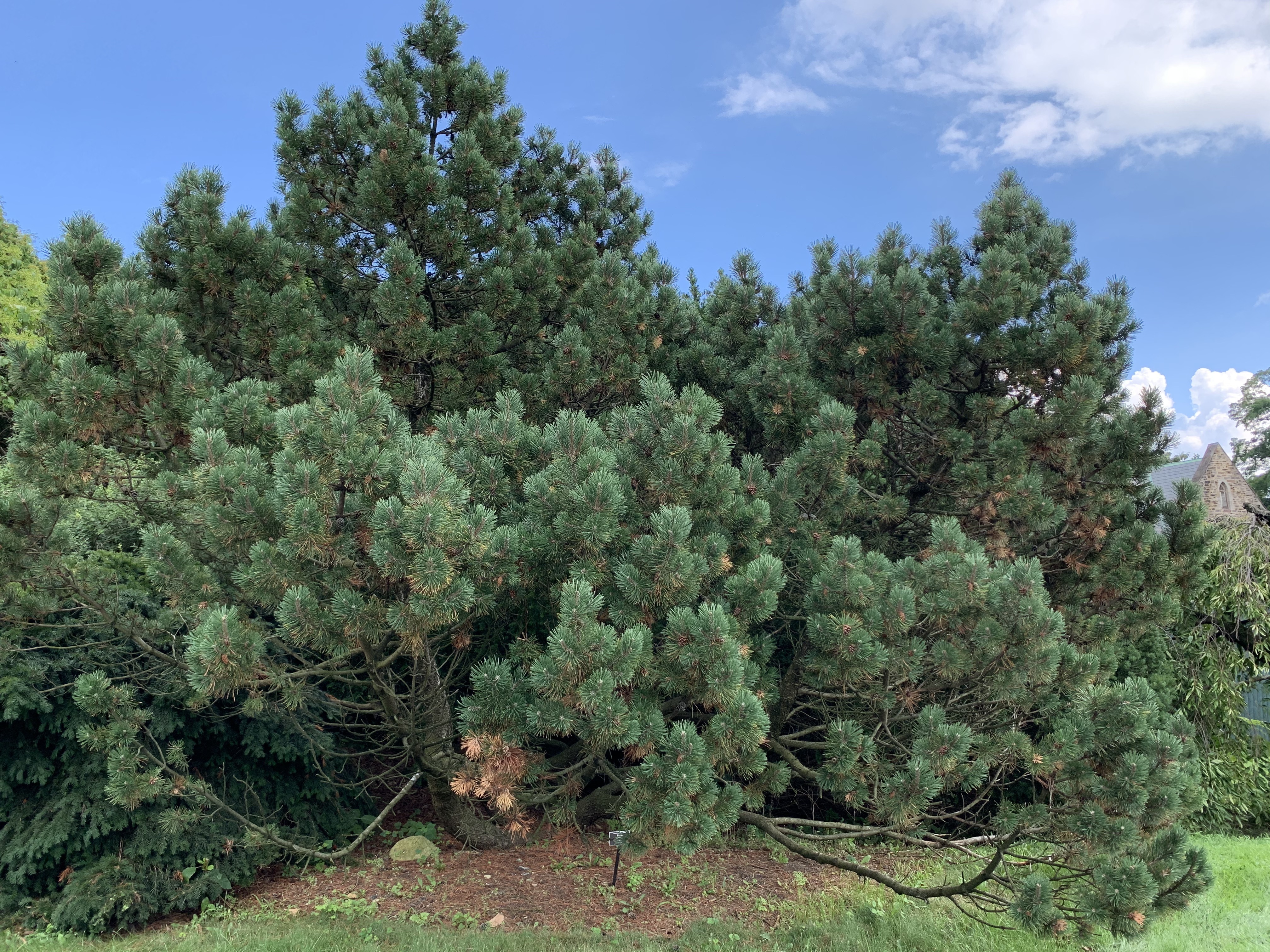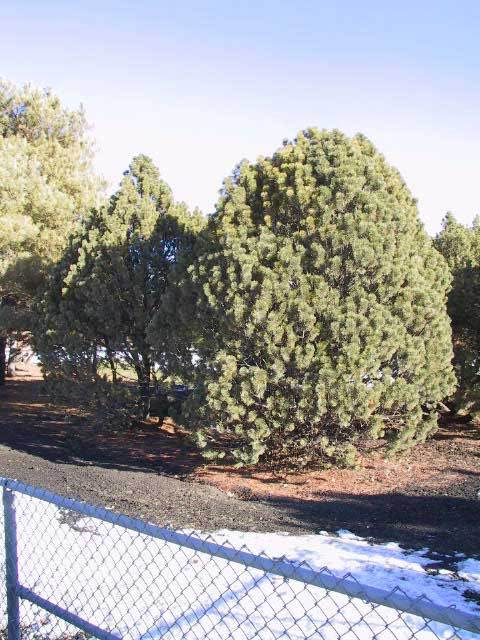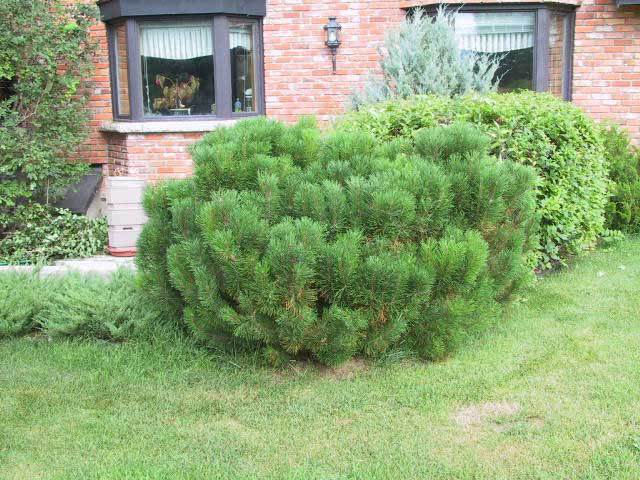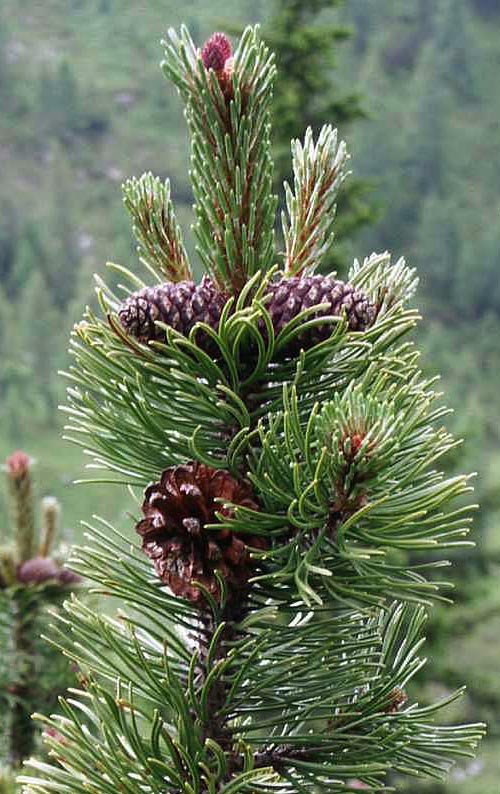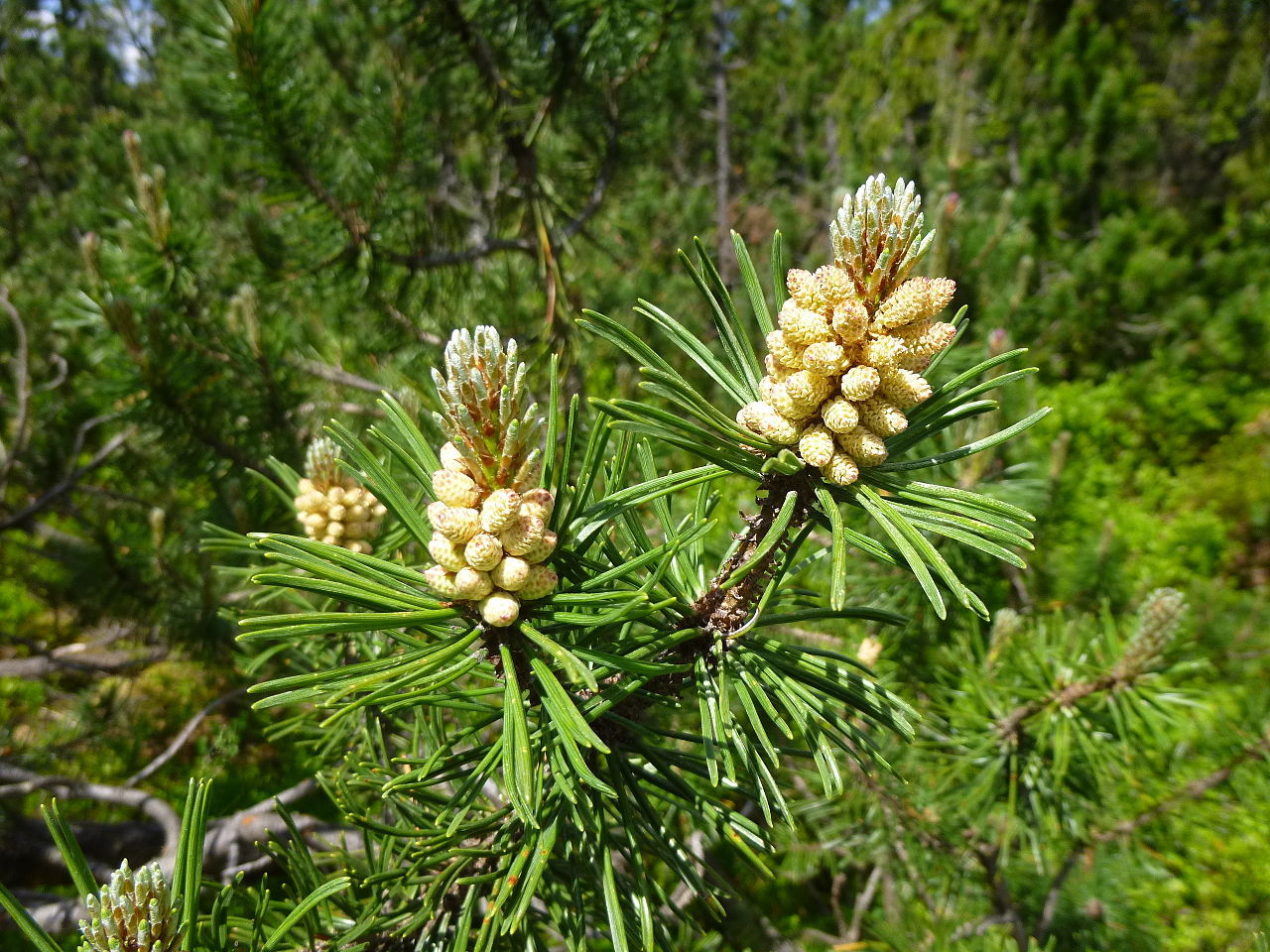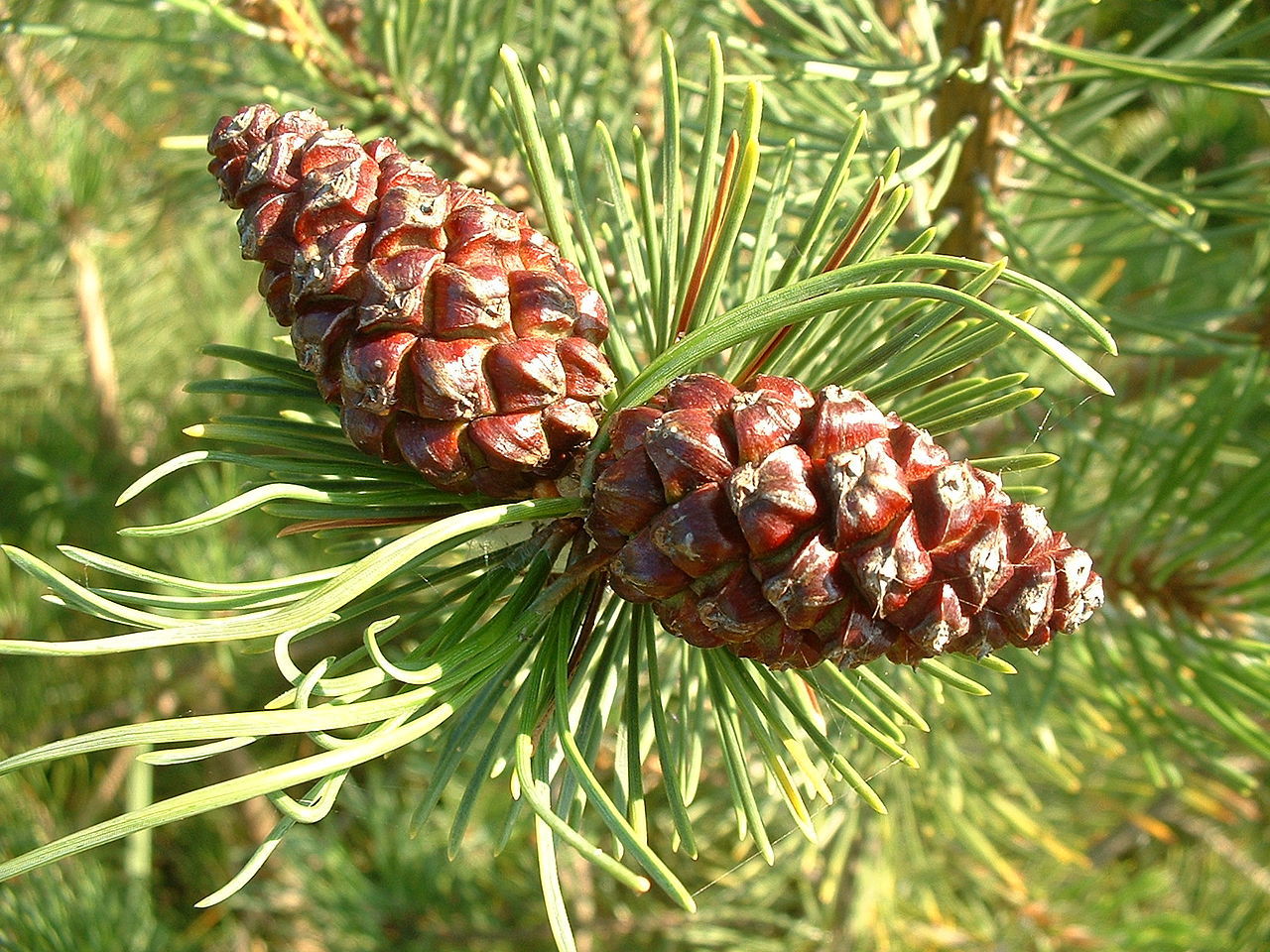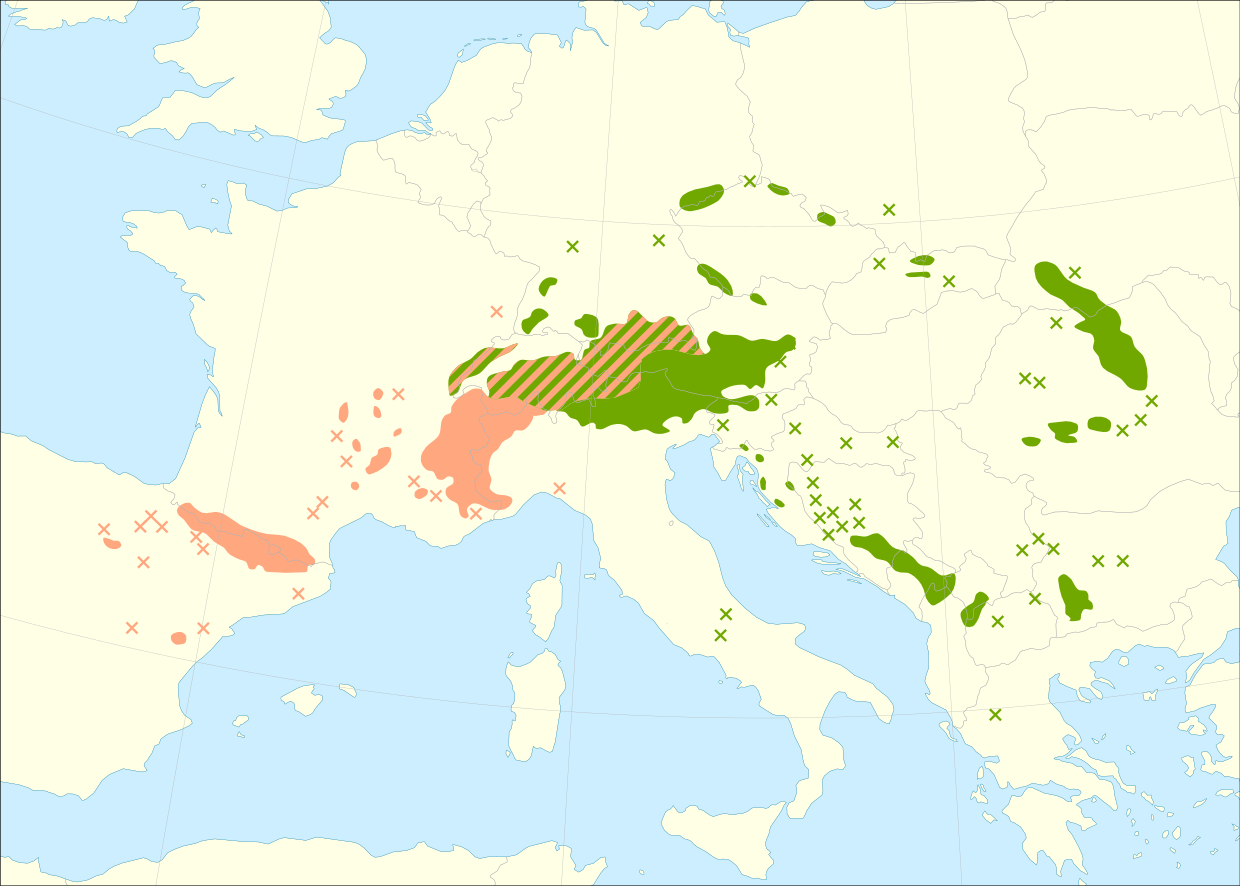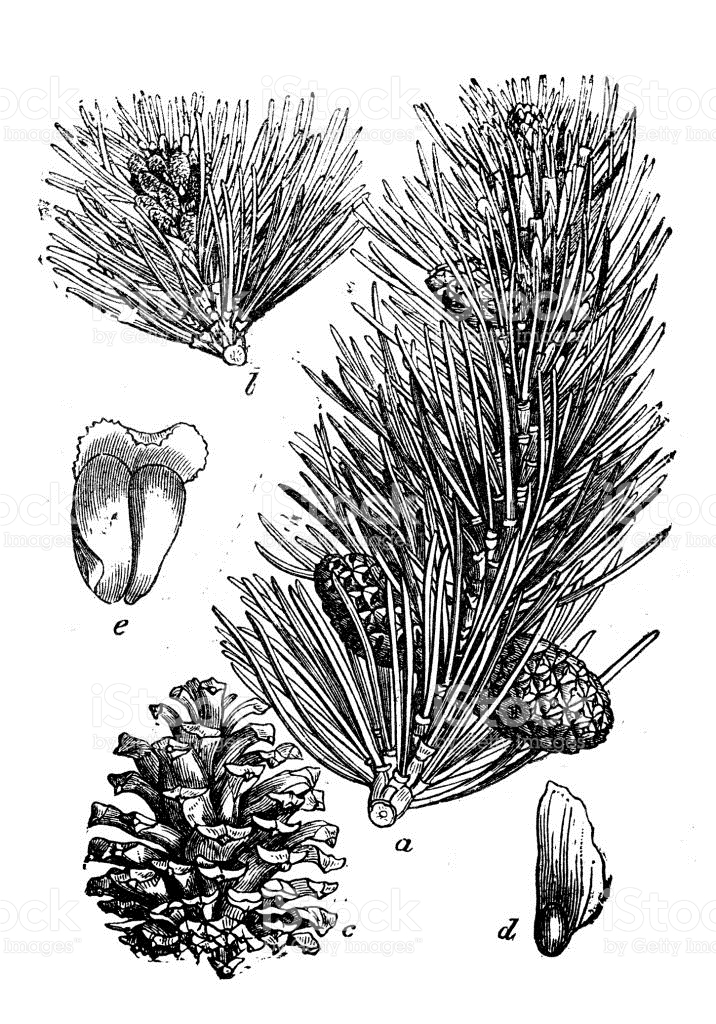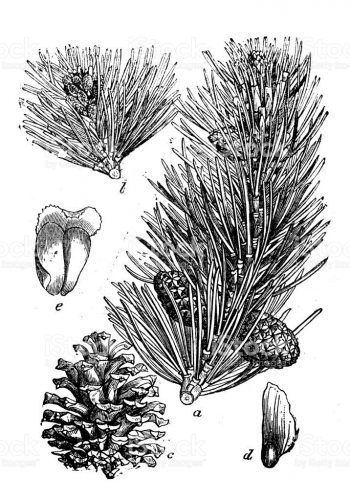
subgenus Pinus, section, Pinus, subsection Pinus. This is one of the 'œclassic' old-world, 2-needled, hard pines.
Pinus mugo, as described in 1765 by Antonio Turra (1730 - 1796), in Giornale d'Italia, Spettante alla Scienze Naturale e Principalmente all'Agricoltura, alle Arti ed al Commercio, is commonly known as mountain pine, dwarf mountain pine, scrub mountain pine, Swiss mountain pine, mugo pine or creeping pine; as well as, Krivulj, or planinski bor in the Serbian language; Klek in Bulgarian; Klec in Czech; sosna gornaya in Russian; Bergkiefer, Krummholzkiefer, of Bergföhre in German; Pin des montagnes in French; pino montano in Italian; and sosna kosa, or kosodrzewina in Polish.
The species name is derived from mid-18th century, partly from the Italian term mugo, meaning "small mountain pine" (plural mughi; 1563 in Mattioli; 1561 as mugho), probably of pre-Indo-European origin. Compare Italian regional (Trent) mughi (plural), cited as a local word by Mattioli. Surprisingly, the name Pinus mugho is sometimes seen in the nursery trade. This first happened, presumably, as a typographical error in an 18th-century encyclopedia.
Ethnobotany. According to various experts and local European authorities, this conifer is used to protect soil against erosion and to retard avalanching. Its wood is hard and heavy. Needles are the source of oil, and are also used for a delicious herbal tea in Bulgaria. As an ornamental it is very popular with rock and landscape gardeners, particularly in Scandinavia, Holland and Germany, where it is widespread in municipal parks and gardens.
Description. Mountain pine is an extremely variable coniferous species of shrub or (rarely) small tree that grows to mature heights 10 to 18 feet (3 - 5 m) tall, with one or more curved trunks. Plants usually monoecious, although rarely subdioecious.
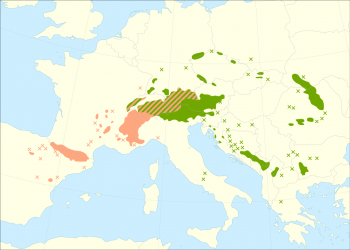
Distribution. This species is native to central and southeastern Europe, east from the central Alps near the Swiss-Austrian border, the Erzgebirge east to the Carpathians and southeast through Yugoslavia and Romania to the Rila and Pirin mountainss of Bulgaria, with an isolated population in the central Italian Apennines, and outliers within the range of subspecies uncinata west to the Vosges and French Alps. It grows at elevations of 4,300 to 8,000 feet (1,400 - 2,500) above sea level, mostly in the high subalpine region at and above the timberline, but also at lower altitudes in peat bogs and frost hollows, exceptionally as low as 650 feet (200 m) in southeastern Germany and southern Poland (Jovanovic 1986. Its highest altitudes are reached in the extreme south of its range in the Pirin mountains of southwestern Bulgaria, where it reaches at least 9,000 feet (2,700 m). It also occurs in Croatia, where it is protected by law.
The species is also naturalized in Canada - Alberta, British Columbia, Ontario, and Québec; and the USA: Massachusetts, Michigan, Minnesota, New Hampshire, and Wisconsin.
Hardy to USDA Zone 3 - cold hardiness limit between -40° and -30°F (-39.9° and -34.4°C).
